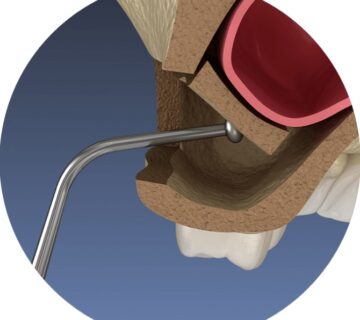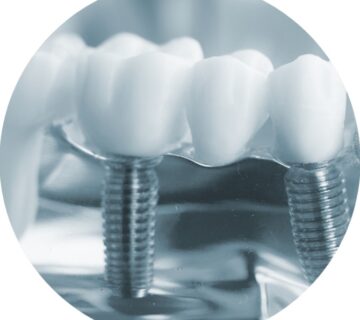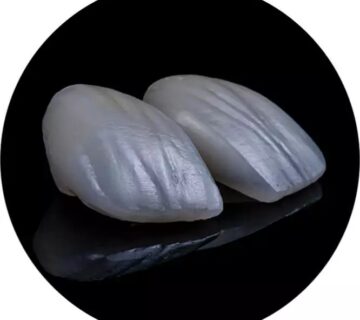Tooth pain can keep even the toughest macho man awake. Whether it is cold sensitivity, hot sensitivity, decay, bacterial infection, tooth abscess or inflammation, root canal treatment can relieve the pain and save your tooth.
Root canal treatment is a dental care procedure designed to remove infected pulp inside a tooth’s crown and roots. After cleaning and disinfecting the canals, the inside of the tooth is filled and sealed to prevent reinfection. Also referred to as endodontic therapy, this treatment can eliminate bacterial infection and save the tooth. Deep decay can also lead to inflammation, irritation, tooth sensitivity, and pain. Your dentist can recommend root canal treatment to remove dental pulp, relieve pain, and repair the tooth. Endodontists also perform root canals to restore badly damaged teeth due to decay or infection.
Your dentist can recommend root canals if you’re experiencing hot or cold sensitivity or tooth pain. Teeth infections can disrupt optimal nerve functions, leading to sensitivity to hot food and beverages. In this case, you’ll need endodontic treatment to remove the infected pulp. Gum disease and gum recession can expose nerve roots and make your tooth sensitive to cold or hot. Piercing tooth pain while biting or chewing may indicate that you need a root canal. Deep decay, repeated dental procedures, and cavities expose your dental pulp to bacteria. These risk factors provide a window for bacteria to enter and infect the pulp, leading to an abscess. To treat an abscessed tooth, you’ll need a root canal procedure. It can save your tooth and enhance oral health.
A root canal is a safe and effective way to remove infected pulps and save your tooth. However, your dentist can recommend tooth extraction as an alternative to a root canal. What is better, a root canal or a tooth extraction? Endodontic treatment ensures you keep your natural tooth and authentic smile and function. Dental implants or bridges can replace extracted teeth, but the best way to protect your smile is to save your natural tooth. If your tooth’s crown is damaged due to decay, your dentist can perform a root canal and attach a custom-made dental crown. So, is it best to get a crown or an implant? A root canal with a crown is cheaper and quicker than extracting and replacing the tooth with dental implants. Overall, endodontic treatment is the best option to eliminate tooth pain due to infection or inflammation.
For decades, old sayings relied on root canals to define unbearable pain. They nurtured a misguided perception that root canals are painful. All dental clinics like Dental Europe Smile Design use local anesthetics, which eliminates pain from endodontic procedures. Nowadays, a root canal is done in one day. It is quick and painless, like a routine filling. Once your dentist fills and seals your tooth, you’ll be back to your old self in no time. But sometimes under certain circumstances, it may take two or more appointments.
Dentists and endodontists perform root canal procedures in different methods. At Dental Europe Smile Design, uses digital approaches to treat infected teeth and restore beautiful smiles. Here are the five main steps of endodontic procedures:
Step 1: Consultation and diagnosis. In this step, your dentist will use diagnostic tools like X-rays to examine the extent of the damage. You can analyze the results with your Dental Europe dentist and consult on the best root canal procedure to eliminate teeth infection and an abscess.
Step 2: Preparation. Your dentist will administer a local anesthetic to numb the nerves in your tooth canal. Then, they’ll use a rubber dam to prevent bacterial infections from contaminated saliva during the treatment.
Step 3: Pulp Removal. Your dentist will drill a tiny hole on your tooth’s crown. This opening should reach the damaged tissue inside the tooth. Then, they'll use advanced dental instruments to remove the infected pulp.
Step 4: Filling and sealing. This step has two potential routes. After cleaning and disinfecting the root canal, your dentist fills and seals the opening on your tooth with a permanent filling. However, an endodontist will use temporary filling. Then, they will send you to a dentist for tooth restoration.
Step 5: Restoration. This last step of the root canal procedure focuses on restoring your tooth. Your prosthodontist or dentist will use filling, dental crowns, or dental bridges to restore function. Your Dental Europe cosmetic dentist can use Digital Smile Design to deliver a beautiful smile. With DSD, your dentist can build porcelain crowns that are indistinguishable from your natural tooth. It can restore function and aesthetics.
- Transparent Pricing
- No Registration Required – one stop care available
- Be Reassured – Only Highly Qualified Dentists
- 24/7 communication service








